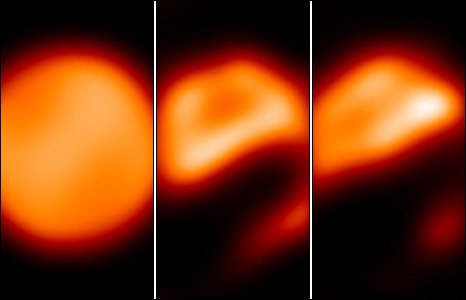
Posted on Friday, April 09 2010 @ 3:06 CEST by Thomas De Maesschalck
BBC News
reports astronomers at the University of St Andrews have taken the first images of an eclipse beyond the solar system. The eclipse of Epsilon Aurigae is caused by a thin disc of opaque dust trailed by a massive and unseen companion. The phenomenon was first observed by German astronomer Johann Fritsch in 1821, but this is the first time astronomers have managed to take close-up images.
Astronomers at the University of St Andrews worked on an international study of the star Epsilon Aurigae, from the Auriga constellation.
Every 27 years it becomes dimmer, a phenomenon which lasts for two years.
The physicists combined light from four telescopes to get the first image of the eclipse, which is 140 times sharper than images from the Hubble telescope.

